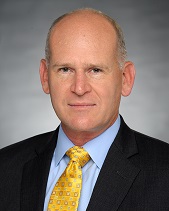Greetings health care colleagues:
Well, we’re through the Yuletide season and most folks are back from holiday travels or hibernations. It’s 2024 and an election year. What can we expect to see this year and for those of us updating strategic plans and reviewing our priority initiatives what should we be considering?
1. Significant ongoing demographic and health care coverage shifts, just a year out from a Presidential election questions arise about how policy may shift

What’s happening on the ground:
- Post pandemic population growth in the US is largely immigration driven, with no clear path to a consistent national approach for undocumented immigrants – now covered for Medi-Cal in California, emergency work permits for Venezuelan immigrants (given Temporary Protected Status by the Federal Government) in New York – altogether spotty, inconsistent with no alignment yet in Congress and White House on a unified solution.
- Birth rates are down and society is aging.
- A larger percent of the population is entering Medicare with consumer sentiment trending towards Medicare Advantage over traditional Medicare.
- The first wave of disabled long Covid patients will start to become Medicare eligible as disabled during 2024, further shifting the payer mix while more states are moving to shift their dual eligible populations into managed care.
- There are new Managed Medicaid programs in recent expansion states launching this year and some of the 10 remaining non-expansion states are exploring options to expand Medicaid, some with smaller Medicaid waiver-driven expansions underway.
- CMS and CMMI have programs launching that are largely reflective of those seen in past administrations of both parties – Making Care Primary (MCP) evolved from CTPC+ and States Advancing All-Payer Health Equity Approaches and Development (AHEAD) Model (AHEAD) is an evolution and expansion of the Maryland global budget – overall more CMS and state alignment targeting total cost of care, quality and access.
- There have been some articles and concerns raised regarding whether health systems will ditch Medicare Advantage coming into 2024 because of rates and payment issues. The number actually leaving MA contracts altogether appears to be small, however there are more systems looking to limit number of “partner” plans based on rates and difficulty to do business, versus contracting with a larger number.
- Provider, nursing and health care worker burn-out is still a big factor, coupled with a growing physician shortage, especially in Primary Care.
How will the industry respond?
- Expect to see more new MA and D-SNP plans launching, both provider sponsored and independent, even as the largest MA plans consider further consolidation opportunities – the proposed Cigna MA business acquisition by HCSC could be a game changer.
- Health plans continue to pursue vertical integration with a focus on primary care and pharmacy access points (United Health Group with Optum purchasing practices; CVS Aetna purchase of Oak Street).
- Other entities have jumped with both feet into the healthcare provider role, including Amazon (purchase of One Medical…including the recent deal with Costco, Iora a top performer in ACO REACH), Walmart eyeing ChenMed; Walgreens purchasing VillageMD and Summit Medical Group). All this despite a capital-constrained environment.
- Many large acquisitions have been slow to become fully integrated into the business of the new parents and growth has been slower than expected in some cases.
- The explosive rise of physician enablement companies was tempered in 2023 as growing competition and slower than projected achievement of margin targets in a market where raising new money was expensive and companies prioritized capital preservation.
- Despite the challenges, the model seems to be working with several firms reporting impressive results and decent medical margin on MA and ACO REACH contracts.
- While the physician market remains fragmented in many respects, considerable alignment has happened in the prior decade with what seemed to be unlimited private equity funding. In many respects, the “easy” deals have been done, leaving 2024 as potentially an interesting year regarding the possibilities of more innovative investing.
- Expect aggressive competition between platform companies to sign up the next round of practices/groups.
- Physician groups will be shopping prospective suitors harder than ever.
- Expect more changes to UM, more on that further down.
- A bifurcation is happening in some markets as providers move to value around their Medicare business while simultaneously seeking to maximize their commercial FFS business. The two approaches with often polar opposite incentives will create strategic, organizational design and resourcing challenges for many health systems in 2024 with some “sheltering in place” and others aggressively pursuing competitive growth through risk.
- More FQHCs are realizing they are key players not just as a safety net for the uninsured, but now for growing insured populations of Medicaid, ACA, Medicare and dual eligible patients. Look for more engagement of FQHCs in existing IPAs, more movement into global risk, new IPA, PACE program and even health plan builds by FQHCs. This may require training and a culture change for some of these organizations that tend to be highly mission driven, and may lack a historic focus on operating margins and managed care contracting quality performance.
- Academic Medical Centers may be realizing that they are not “network essential” in many markets without primary care as a core part of their business in the new world of value with less hospitalization, less tolerance for institutional fees and more ambulatory and community care.
2. Continued downward squeeze of less dollars per member overall coupled with new expensive therapies create more cost pressures across the board
What’s happening on the ground:
- Budgets are tight for states, CMS and payers nationally, as there is no more money to add with immense pressures to cut costs significantly for Medicaid and Medicare.
- The 3% unemployment rate continues steady over the last many months with no sign of changes. If this is the case, competition for new healthcare employees remains high, and benefits packages need to stay competitive.
- Potential new drugs can be game changers for treatment and cost: KarXT for schizophrenia, TransCon PTH for hypoparathyroidism, Carvykti for multiple myeloma, Casgevy and Lyfgenil for sickle cell disease, Aducanumab for– Big steps forward for patients, but will have a big price tag.
- 40% of Medicare beneficiaries are obese, will Medicare cover Novo Nordisk’s Wegovy, Eli Lilly’s Zepbound, or other GLP-1s or other treatments for obesity at over $1000/person/month?
- Florida can buy medications from Canada now. How will other states or Canada and the pharma industry respond?
How will the industry respond?
- Employers will push back hard on “holding the bag” to offset government program cuts.
- Plans are scrambling to meet the needs of their customers and looking for provider contracts through which they can align on the necessary behaviors to truly bend the cost curve.
- There is a re-visiting of bundles and episodes underway, in addition to the less common capitation and risk pool budget models in full risk, for Medicare in particular – look for more of this to come even in MSSP ACOs. In commercial, reference pricing is on the table and more providers are looking to get into or grow their presence in the Direct to Employer space.
- The proven approach for a health system to use its own self insured employee plan as a learning lab and spring-board to get into Direct to Employer and all lines of business risk is coming back and expanding across the country.
- Will Commercial insurance and self insured employers expand coverage for new weight loss drugs and other new therapies coming onto the market? Insurers and self insured employers will need to come up with creative criteria with which to select members who qualify for weight loss treatment for GLP-1 drugs and other new medications in alignment with weight loss surgery criteria.
- Continued increase in direct to employer and direct to consumer concierge models (BetterHelp, Roman, Forward, One Medical, etc.), now there are even emergency medicine concierge services popping up (Sollis).
- At the same time as concierge is on the rise, we’re seeing a desire for more HMO narrow network products to provide competition in that market and line of business.
3. Staffing still a crisis for providers in particular, driving access challenges and financial pressures on hospitals and health systems, while capital constraints compete for dollars

What’s happening on the ground:
- Health systems have thousands of openings and temporary labor continues to be a massive cost pressure while market competition and government policy continue to drive up staffing requirements and salary/benefits costs.
- Meanwhile, health system bricks and mortar, equipment and technology are aging and in need of upgrades and leaders are conflicted on investing in capital or labor.
- An aging workforce coupled with burn-out exacerbated by the Covid crisis, have created a lack of experienced staff. Often, available staff may be credentialed but lack necessary experience to complete tasks at the expected level.
- In-house physician staff demand higher stipends as physician shortages increase.
- Nurse practitioners are the fastest growing job in U.S. now and projected to grow 45% by 2032, grew 8-9% 2022-2023. There is increasing government push to allow more independence for NPs to practice.
How will the industry respond?
- Buildings and equipment will continue to be repaired until it is no longer possible.
- Health systems will be looking for ways to grow primary care capacity through a combination of targeted investment in organic growth and acquisition, coupled with partnerships with physician aggregators.
- Some services will be closed based on the cost benefit analysis of investing in a building or equipment for a particular service, or through service line rationalization through mergers or collaborations. Very specialized care may be diverted to larger or academic settings which may benefit quality while making access more challenging for some patients.
- Technology budgets will likely continue to be constrained as the ROI from previous investments will either not pencil out as had been expected or take longer to be realized than initially expected.
- Telehealth and offsite monitoring will continue to be used when appropriate.
- In-house physicians, who are paid higher rates, are likely to drive an increase in the use of Advanced Practitioners such NPs, PAs, CRNAs inside hospitals and in ambulatory networks as a cost savings initiative.
- The development of worker pipelines to train and keep skilled labor will continue to grow with a focus on closing critical workforce gaps and reduce turnover.
- Providers, health systems, medical groups, FQHCs and others, will need to focus on recruitment, training and workflows to enable greater use of nurse practitioners, pharmacists and other advanced practice providers as regulations create more flexibility and independent practice options.
- Healthcare employers will continue to redesign workflows and scheduling to avoid paying overtime maximize utilization of staffing.
- Successful organizations partner to develop or create clear career growth opportunities for people entering the company at any level, to achieve their targeting growth potential
4. Continued transition to more value-based payment and risk for all lines of business, with increased variation state to state
The Value-Based Payment transition continues, albeit, much slower than initially anticipated and with more variation state to state when including Medicaid and managed care policy, especially when combined with new CMS pilots limited to less than 20% of the states
What is the evidence that the transition to more VBP contracting is continuing to slowly move forward?
- CMS 2030 vision to have most if not all Medicare beneficiaries in value-based payment arrangements.
- Pioneer ACO became Medicare Direct Contracting and then ACO REACH with more physicians and beneficiaries than ever covered under this advanced VBP model.
- Continued expansion and success of Medicare Shared Savings.
- Continued growth of Medicare Advantage and expansion of Medicaid managed care nationally with more states requiring value-based payment arrangements for Medicaid and some considering all lines of business, all payer approaches such as through the new CMS AHEAD program that will launch in 8 states in 2026.
- More health systems managing or looking to manage their self-insured employee plans through value-based payment/population health management models.
What will be changing in 2024?
- Eight states, including Downstate New York, will be applying to participate in the new CMS States Advancing All-Payer Health Equity Approaches and Development (AHEAD) Model with significant ramifications to both providers and payers over the next decade as the program is refined and prepared for a 2026 launch.
- In states with Medicaid expansion, a history of VBP contracting and those entering into the new AHEAD program, payers will continue to work on creating more value through collaborative platforms and relationships with providers.
- Focus on improving outcomes and support strategies to mutually gain market share while leveraging value-based payment arrangements.
- In 2024 Population Health will be under scrutiny, especially related to management of healthcare resources through Utilization Management and, in particular, Prior Authorization (PA).
- CMS passed new rules that started in January 2024 requiring more collaboration in policy and process for UM and has required plans take input from practicing community physicians on these. Lobbying organizations have gone on record again regarding the administrative burden around the process and an unclear return on the investment for the payers and other risk-based organizations.
- To respond, the Biden administration has passed changes to Prior Authorization, including cutting turnaround times in half and compliance with HL7 technology for plans by 2027.
- Plans are being challenged to demonstrate the value for the process. They have begun to look at coding and procedures that might require PA and how to edit them down to only procedures where there is a real opportunity in evaluating the care being provided, and trying to be more lenient in allowing other procedures to go through with just a notification of a planned hospitalization or procedure.
- Nonetheless, expect continued pressures on hospitals and health systems to reducing or removing facility fees to surgery creating rapid shifts from inpatient, to ambulatory, to a surge in care and monitoring at home.
- Care management for patients (members) with chronic conditions or those transitioning from the inpatient environment to the outpatient status continues to be a focus, but this time there is emphasis on prioritization of the members who need to be managed that is data driven. Those patients at the highest risk for a hospitalization or a major medical event will have resources extended to prevent these issues from developing, so long as they can be identified using data, and engaged in a meaningful manner by nurses, social workers and community health workers.
- Health systems move more and more toward a primary care driven value-based care model and value proposition – focus over time on success through market share and access to premium versus fighting for higher rates and against denials.
- Health systems, medical groups and FQHCs realize that success lies less in the specific technology and more in the ”people” expertise and how networks are configured, how providers are financially aligned, how data drives priority actions at point of care and how care is managed.
- Look for more provider sponsored health plans and growth of those already in place, especially in markets where that provider is the dominant player.
- As primary care grows, more advanced models are moving to push behavioral health integration into primary care.
- Enhanced data analytics with point of care solutions are being integrated into the Electronic Medical Record to drive prioritized quality, total cost of care and clinical continuity actions directly into the doctor/patient interaction.
- More integration of social determinant of health data and solutions with a focus on measuring ROI is being sought more often.
- ACO REACH, California’s CalAIM, the new CMS AHEAD and Making Care Primary (MCP) programs and New York State’s pending new Medicaid 1115 Waiver all have a focus on leveraging beneficiary specific and macro social determinant data to drive funds flow, network access and other key decisions while measuring the financial impacts.
Of course some health systems will revert to their “wait and see” model and some health plans will continue to avoid sincere engagement with providers in percent of premium value based payment arrangements across all lines of business – The 2024 election year threatens to slow movement to value as many organizations adopt a wait and see attitude.
This is a mistake, as savvy competitors will use any pause as an opportunity to further gain market share, align physicians, develop capabilities and extend their early mover gap.
Contact us at info@copehealthsolutions.com or 213-259-0245 for more information. We are excited to meet with you and learn how CHS can help your organization succeed.






